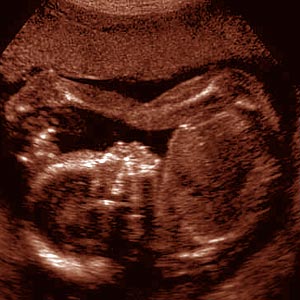Late Term Abortion

Late term abortion is highly risky and contentious as the fetus is more developed and at times viable too. A late-term abortion usually refers to an induced abortion procedure carried out after the 20th week of gestation (few people refer to abortion after 24 weeks as late term abortion). The term late-term cannot be clearly defined as it depends on the viability of the fetus. Few late-term abortions are termed as post-viability abortions. There are no clear statistics as to why people resort to late term abortions.
Late term abortion is usually performed as an out-patient procedure and does not require hospitalization. Late term abortions are not legal though it is legal to terminate a pregnancy up to birth if there is a serious risk involving physical or mental abnormality of the fetus or the mother.
In the United States, late term abortions are illegal. Anti-abortion people feel that late term abortion is brutal as it involves killing a viable fetus whereas pro-abortion people feel that late term abortions are necessary in cases where the health of the fetus or the woman is at risk. Late term abortions can be performed only after 2 qualified doctors certify the risks involved in carrying forward the pregnancy.
Late term abortion procedure
There are different methods of late
term abortion. The gestation period of the fetus determines the type of abortion to be chosen.
Gestation period is calculated by counting the number of weeks from the first
day of the woman's last menstrual period (LMP). The three medical procedures
associated with late-term abortions are:
Dilation and evacuation (D & E): The cervix is dilated and fetus is removed by inserting forceps and suction tube into the uterus. After the removal of the fetus, vacuum aspiration is used to remove the remnant tissues. The procedure generally takes between 10-20 minutes and if the patient is healthy there will not be any complications. Patient might experience bleeding for up to 14 days. This procedure is carried out during the second trimester.
Intact dilation and extraction(IDX or D & X): Also known as partial-birth abortion, this procedure is a 2-3 day process. The cervix is dilated and forceps are used to grab the fetus's leg to place it in breech position. After this the fetus is partially pulled out of the birth canal (the head remains inside the canal). An incision is made at the base of the skull to remove the brain tissue; this forces the skull to collapse. After this the entire dead fetus is removed. This procedure is carried out during the third trimester; these abortions are very rarely performed these days.
Early induction of labor: This procedure is very painful and is rarely used these days. Abortions done due to fetal abnormality are usually performed with induction of labor or with IDX and elective late-term abortions are generally performed with D & E.
Reasons for late term abortions
- The woman does not realize she is pregnant.
- Irregular periods.
- Mistake while calculating the last menstrual period.
- Fright in the woman prevents her from telling her
partner/parents about the pregnancy thus delaying abortion decision.
- Prolonged time to decide on abortion, by the time the
decision is made the pregnancy would have already completed the first
trimester.
- Difficulty to locate a right hospital to abort during
the early stages of pregnancy.
- Emotional trauma faced by the woman from a broken
relationship that caused the pregnancy.
- Nil awareness about late abortion.
- Major problem in the fetus.
- Major problem in the woman's health.
Understanding late term abortion
Late term abortions are tough
both, physically and mentally. Any clinic that offers such service should
ensure the well-being of the patient. The following procedures will be
completed before the procedure:
Confirmation of pregnancy: The hospital will get an ultrasound done
to confirm the exact gestation period.
Pre-operative assessment: Routine lab tests like Rh typing,
hemoglobin testing, and urinalysis are done. Patients will be screened for
anesthesia effects also.
Counseling: Counseling is very essential for every woman who opts
for late term abortion as it will help her deal with mental stress. Counseling
services should also offer information about the procedure and the possible
risks and complications involved.
Patient awareness
Prior to the abortion
- Patient should be allowed to talk about her
condition, both physical and mental.
- The hospital should educate the woman about the
different options available to carry out the abortion.
- Woman should be allowed to choose the abortion method
(with the consent of the healthcare provider).
- Woman should be educated about the risks and
complications involved in the procedure.
After the abortion process, the patient will be sent to the recovery room and educated about after- care. The patient should return to the hospital for a follow-up check-up as advised by the doctor.
Disadvantages of late term abortion
- Any surgical procedure can be risky and create complications.
- Late term abortion is an invasive procedure and can be painful.
- Bleeding and cramping might last for about one week.
- Sedation induced during the procedure might cause discomfort.
Late term abortion scenario in the US
The United States Supreme Court's decision on
abortion permits states to impose strict restrictions on post-viability abortions. As of April 2007, 36 states had
bans on late-term abortions with exceptions like threat to the woman's life,
physical health, and mental health. Few states permit late-term
abortions only when the woman's life is at risk; few others permit late-term
abortions if the woman's life or physical health is at risk.
An observation is that out of the
total number of abortions performed per year only 1% occurred at 21 weeks or
more gestation. Late-term abortions are more common in New
York, Georgia followed by New Jersey.
Top of the Page: Late Term Abortion
Tags:#late abortion #late term abortion
 Planning Pregnancy
Planning Pregnancy Pregnancy Diet and Exercise
Healthy Weight Gain in Pregnancy
Pregnancy Food Cravings
Pregnancy Heartburn
Improving Fertility after 35
Ovulation Test Strips
Pregnancy Symptoms
Early pregnancy cramping
Early pregnancy Test
High Risk Pregnancy
More on Pregnancy
 Natural Childbirth
Natural Childbirth Premature Birth
Pregnancy Massage
Pregnancy Problem
Pregnancy Due Date Calculator
Amniocentesis
Twin Pregnancy
Ectopic Pregnancy
Pregnancy Morning Sickness
Molar Pregnancy
Pregnancy Ultrasound
Constipation during pregnancy
Insomnia during Pregnancy
Smoking during Pregnancy
Teen Pregnancy
Exercise during pregnancy
Late Term Abortion
Sign of Miscarriage
Pregnancy Fatigue
Pregnancy Gas
Pregnancy sciatica
Belly Wrap after Pregnancy
Emotional Health during Pregnancy
Lactating Mother
Infertility
Recurrent Miscarriage
Pregnancy Varicose Veins
Postpartum Depression
Epidural
Premature Infant
Top of the Page: Late Term Abortion
Popularity Index: 101,024

